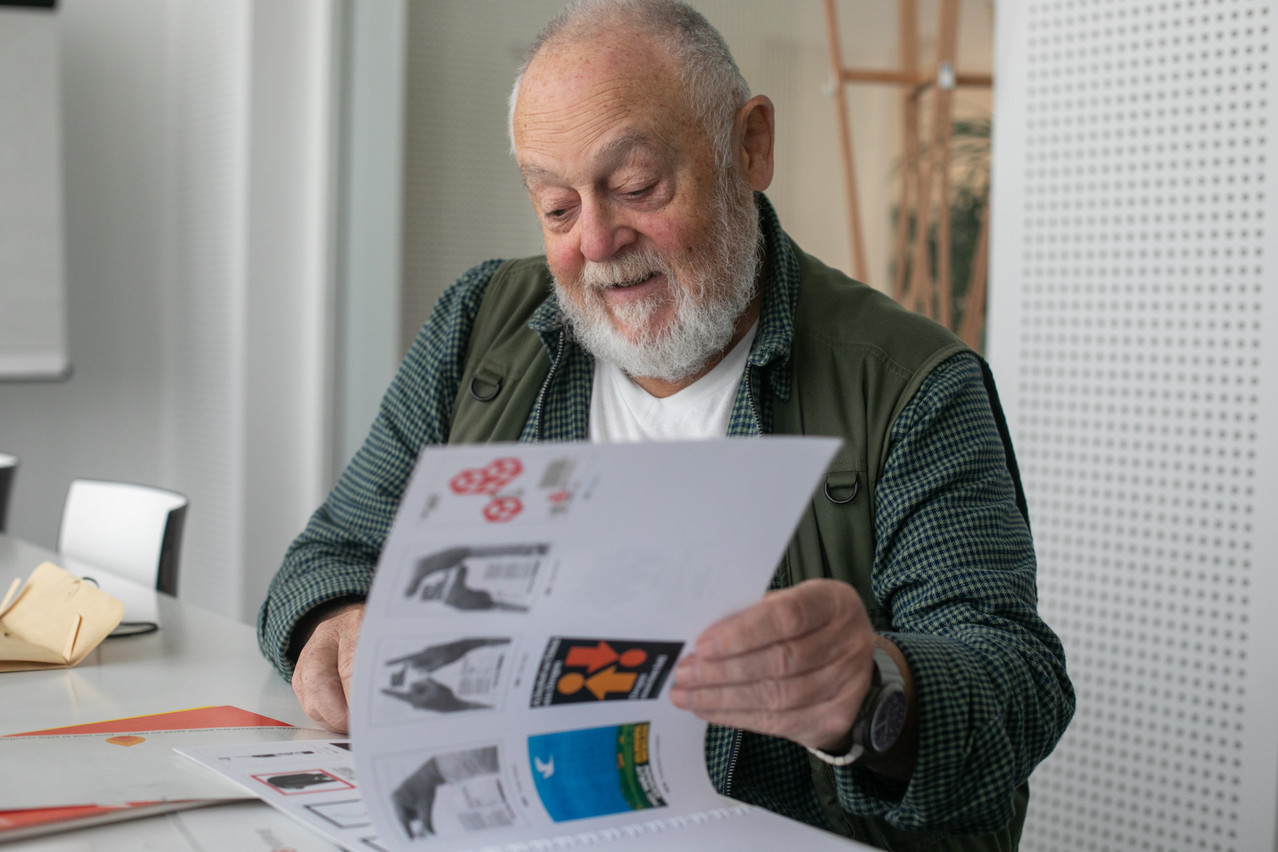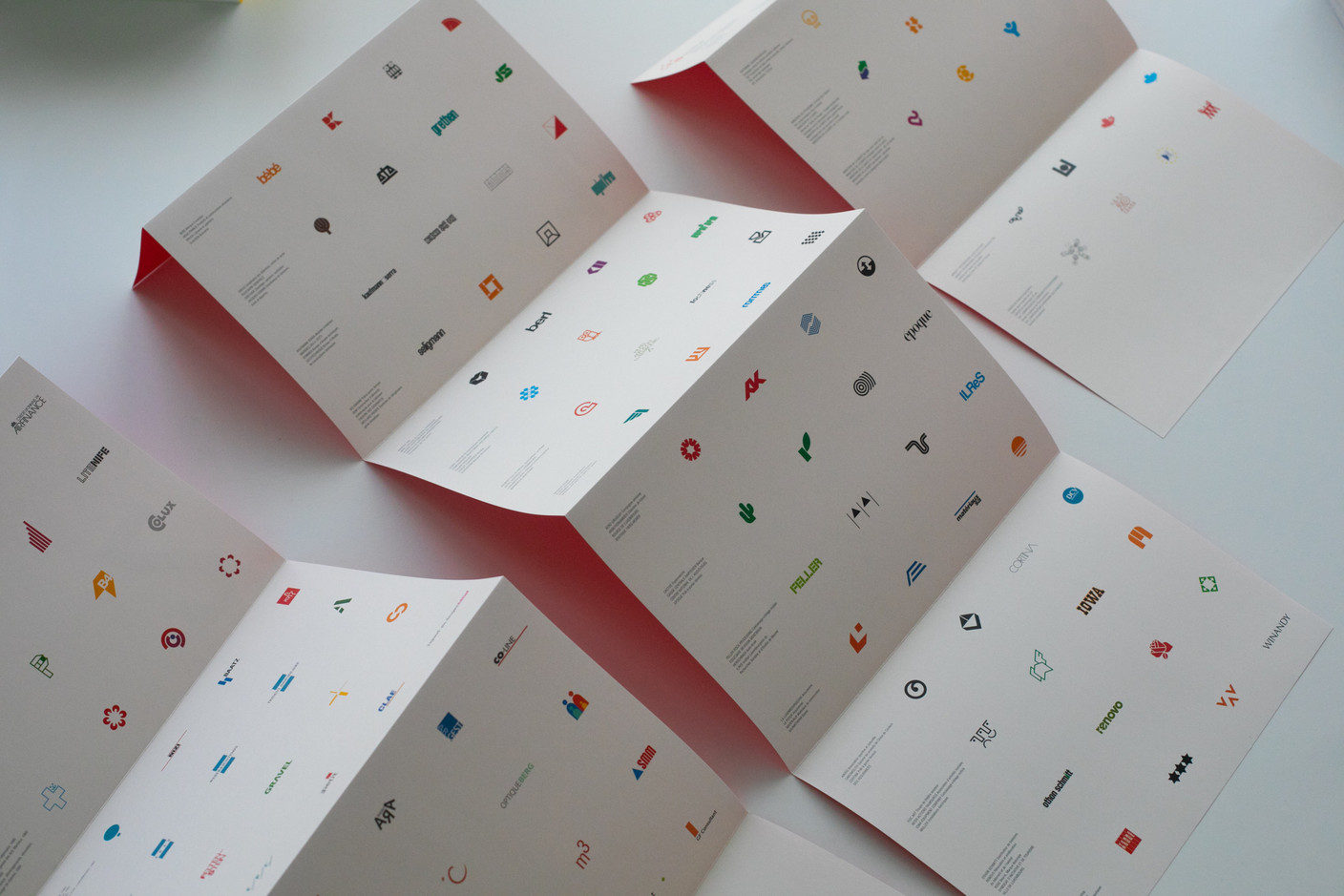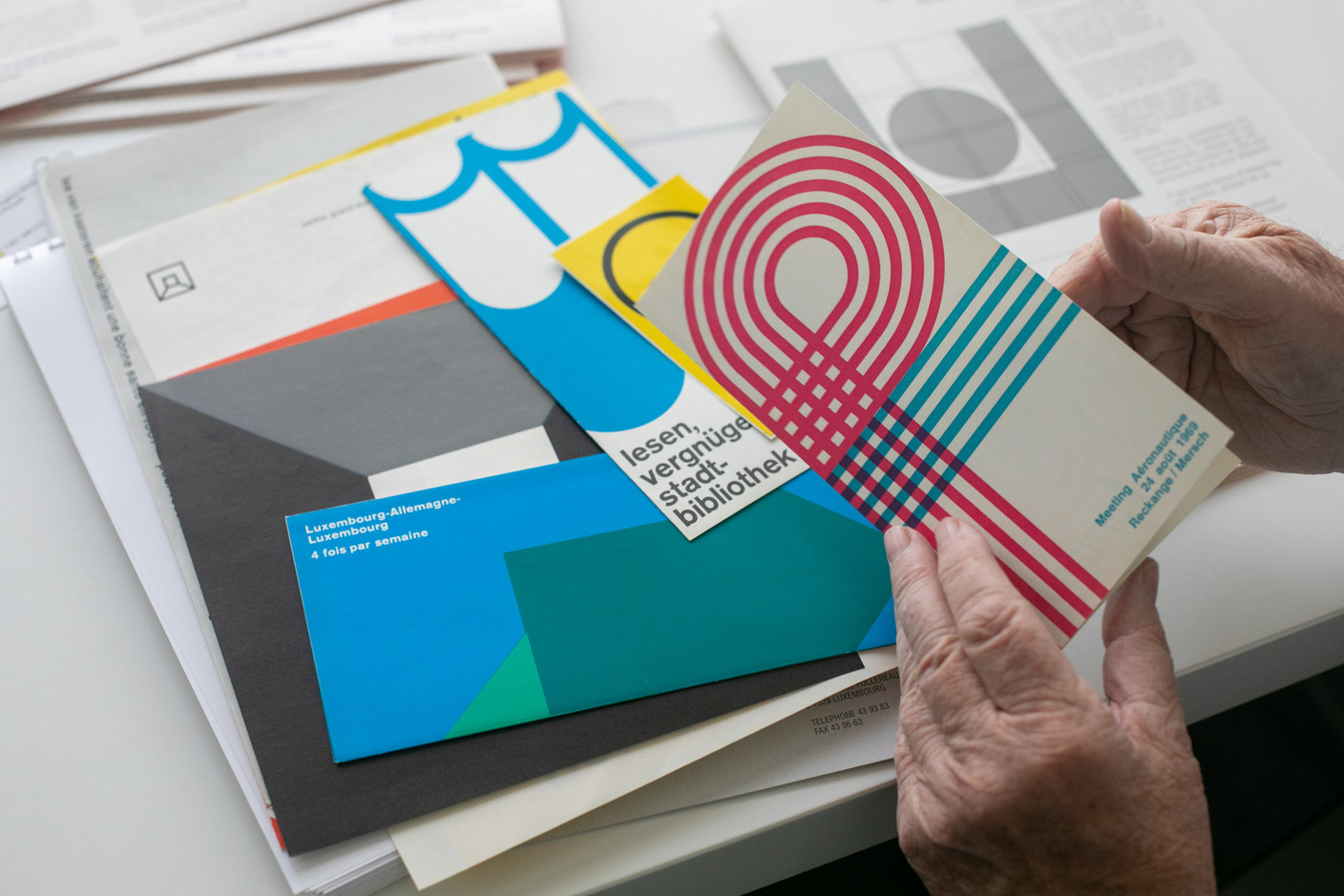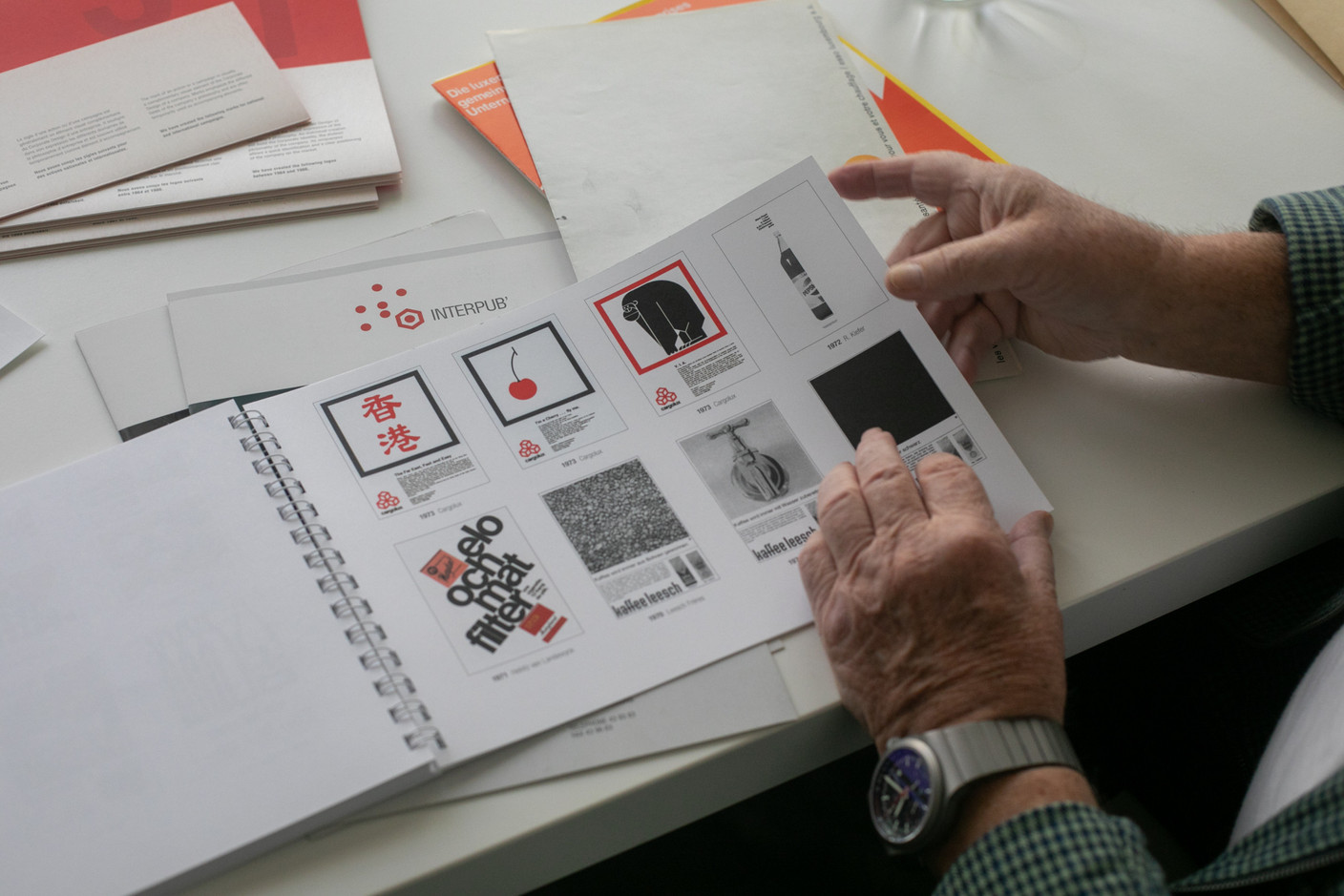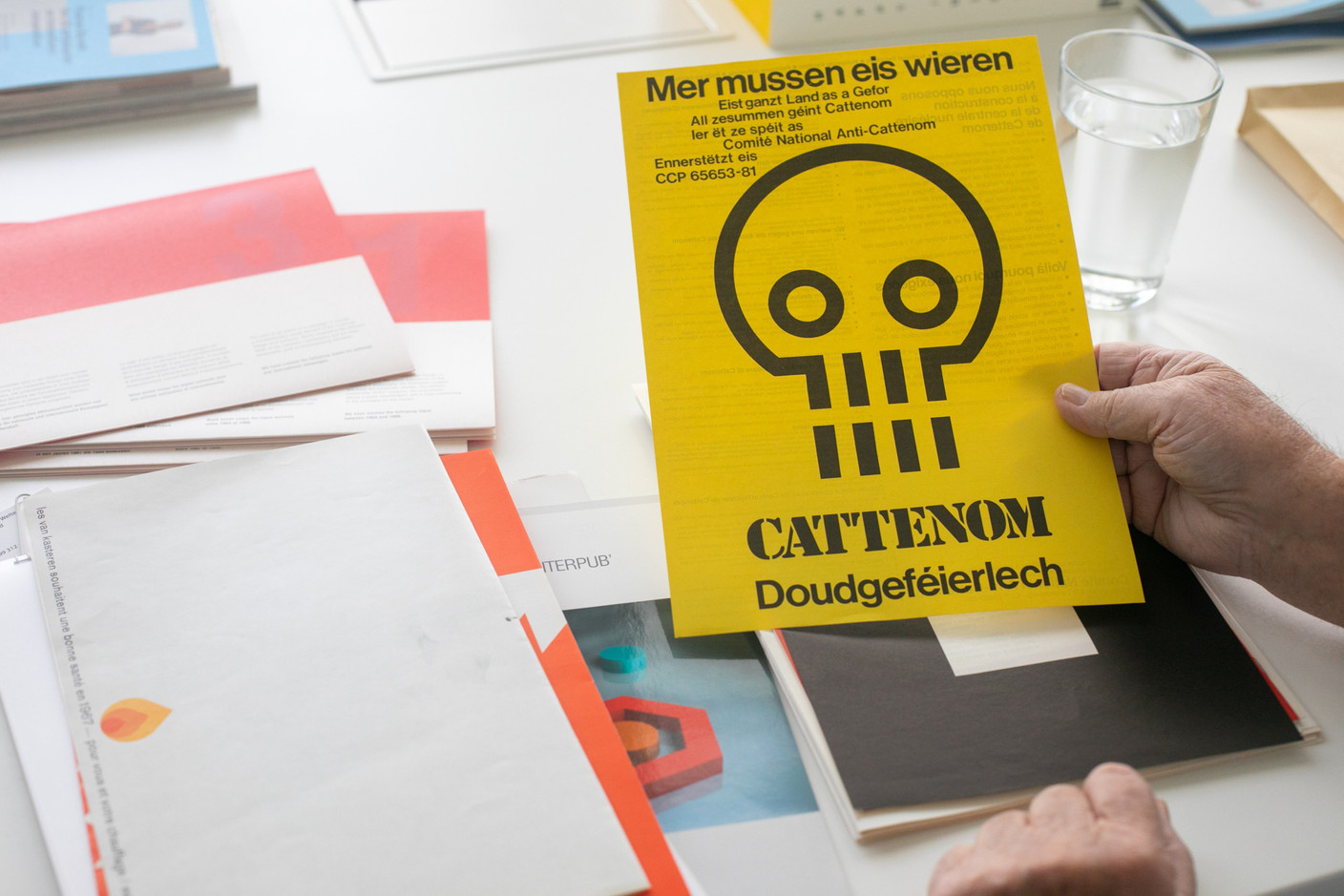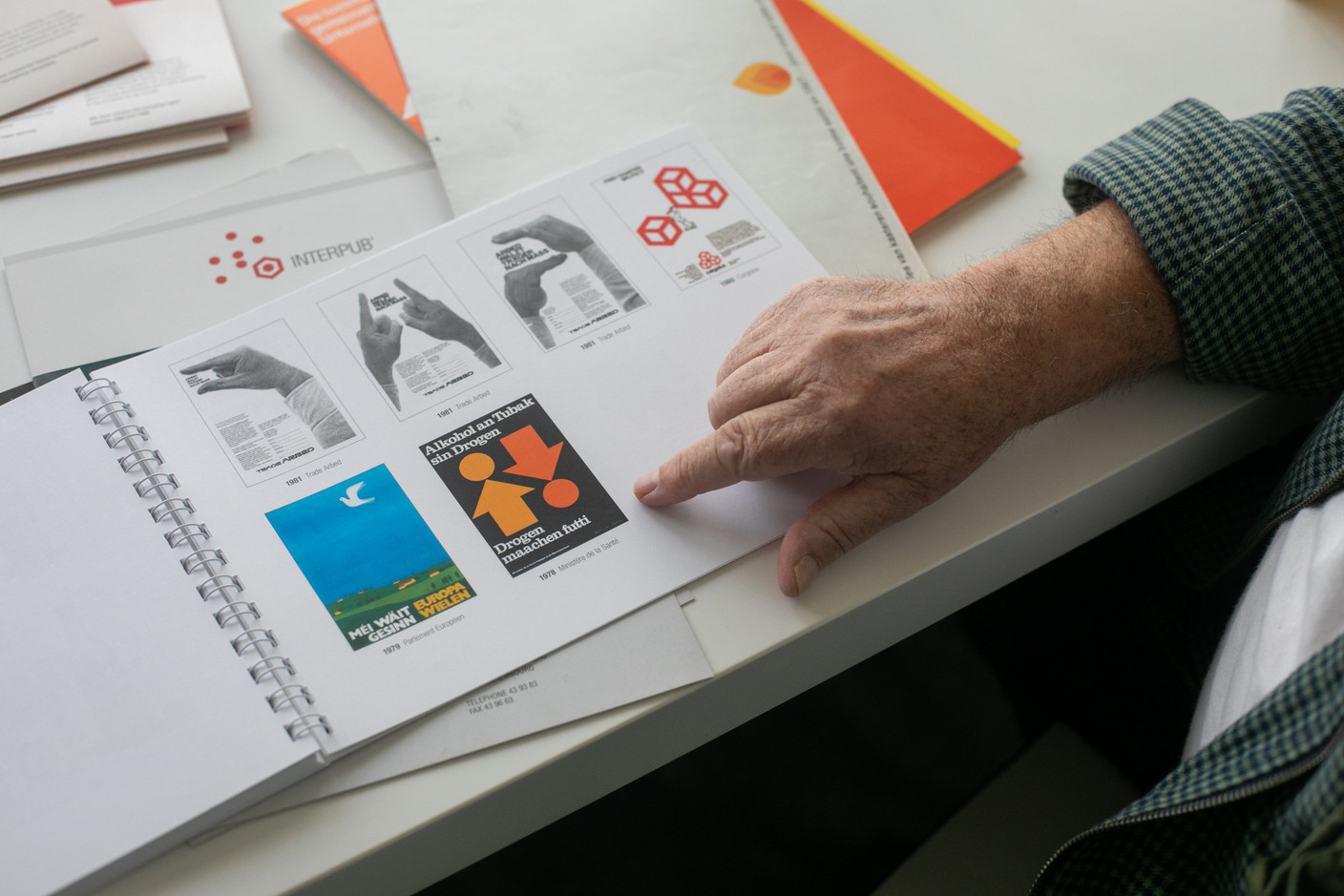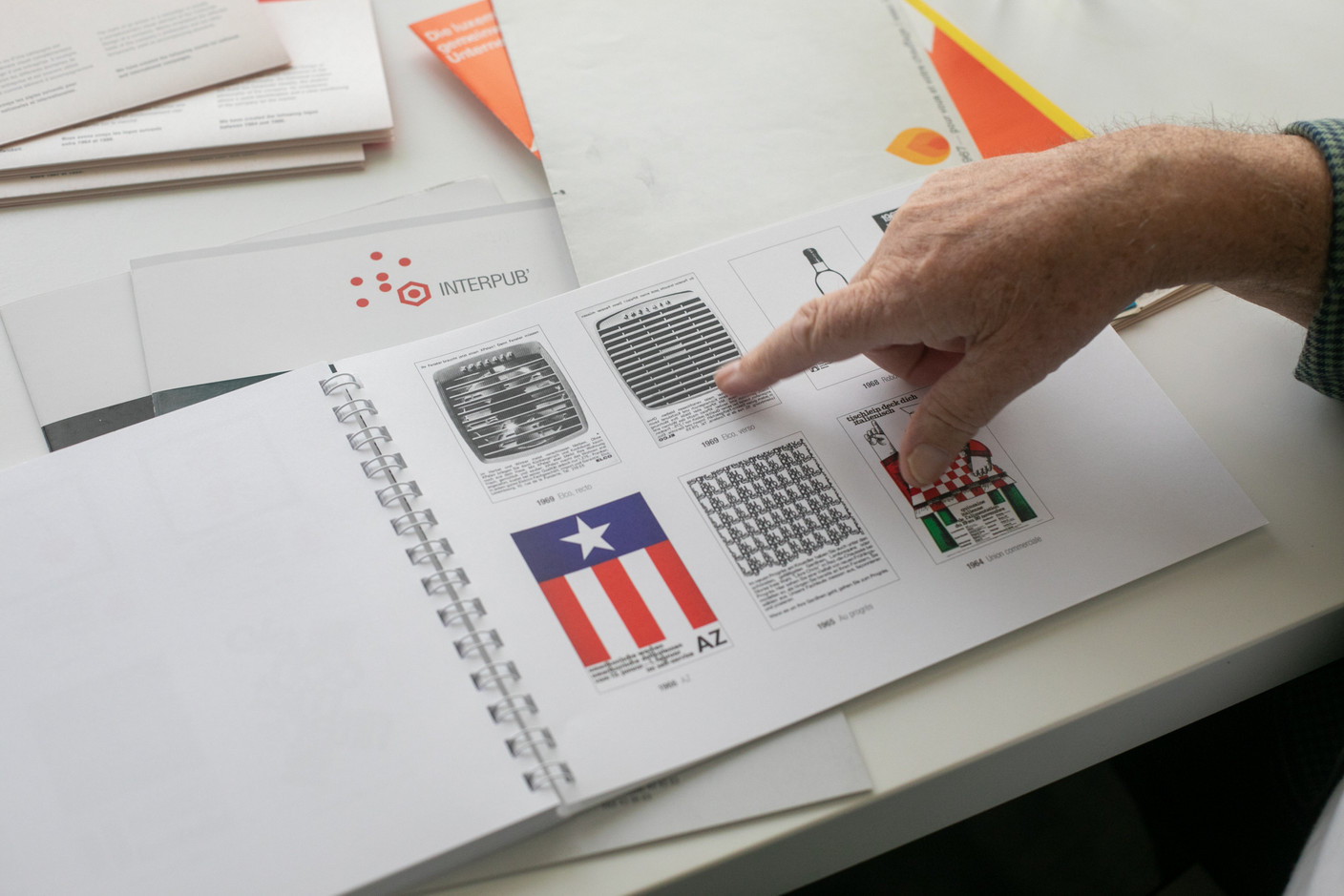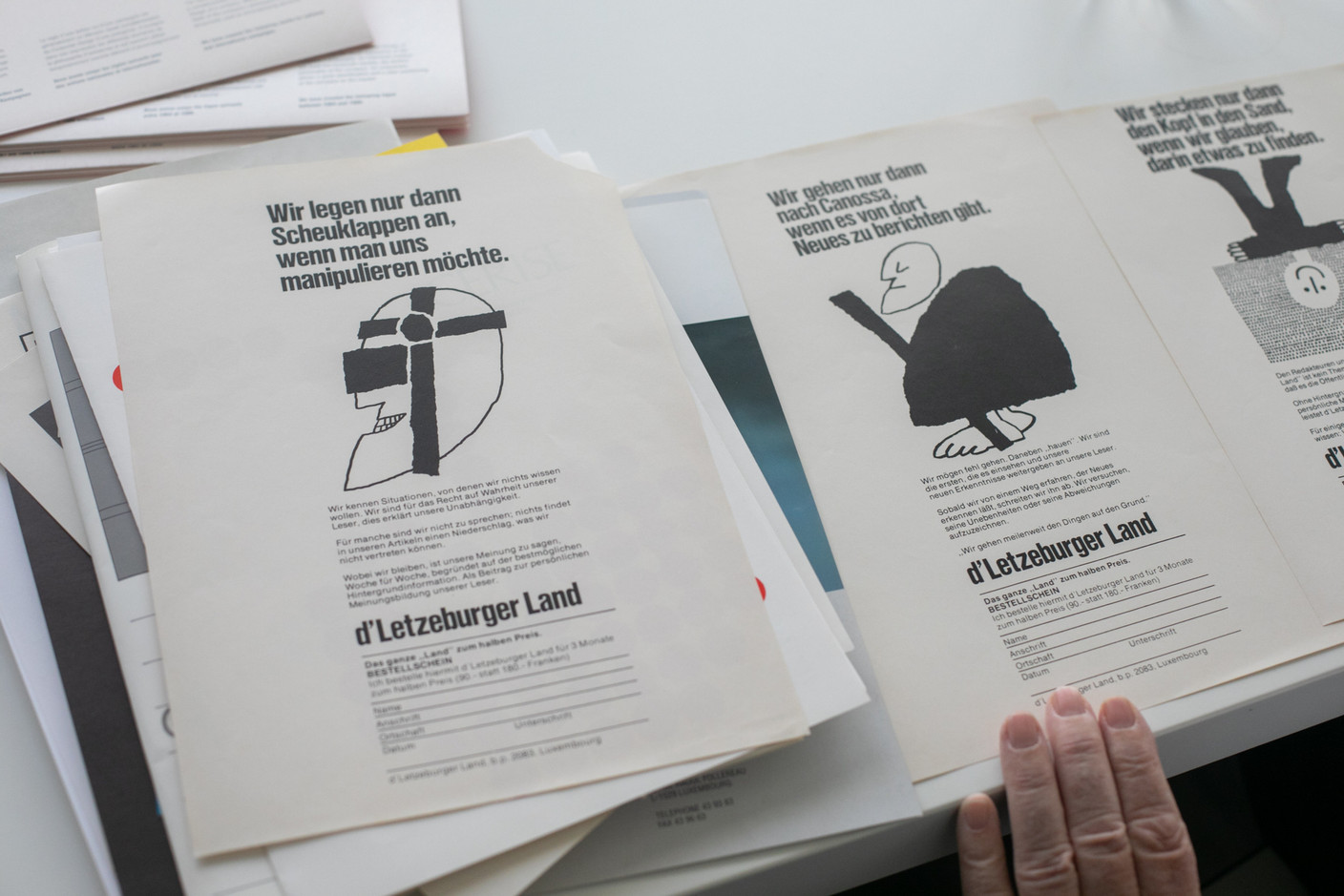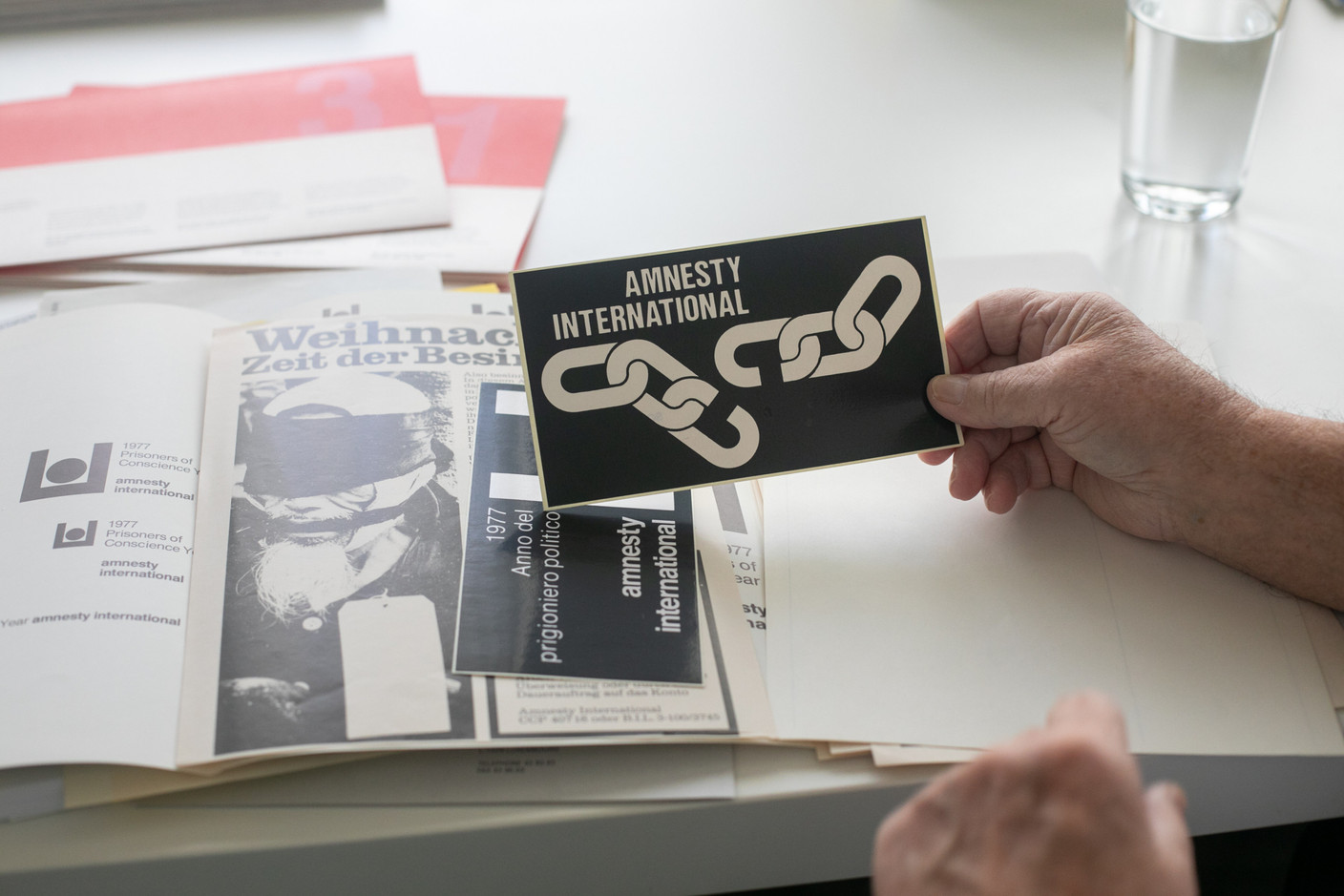What do the three red cubes representing Cargolux, the green three-branched plant that can be found everywhere when shopping at Cactus, and the illustration of the historic Spuerkeess building over the Adolphe Bridge that appears on the bank's counters have in common? Behind all of them is Leo Reuter.
The 81-year-old graphic designer has "left his mark on the Luxembourg landscape through his work", says , CEO of Maison Moderne, co-organiser of the . The MediaAwards have been renamed this year to honour Reuter. “He was the first and remains without doubt one of the greatest creative minds in Luxembourg.”
His creativity goes back to his early years. "I was unhappy at school. I liked drawing, I was already thinking of doing something in that direction," recalls Reuter. Opportunities soon presented themselves. The first time, he was 13 years old. "I was the neighbour of Guy Binsfeld, who was about four years older than me. When he was in high school, he edited a student newspaper called Spider. He would write and I would draw the headings for the articles."
We [Binsfeld and Reuter] were competitors, but we remained good friends.
Rapid growth
Things came to fruition a few years later, when he went to study design in Saarbrücken. “At that time, Guy was writing texts for an American bank that had set up shop in Luxembourg, the Crédit européen. He offered me to do the graphic part. Their director was so delighted that he wanted to give us a fixed salary of 5,000 francs,” he says. It was he who pushed them to set up their agency. And in 1964, Interpublicité was born. “There was no agency providing different services (corporate identity, campaign writing, etc.) at that time. We grew very quickly.” The Grand-rue offices became too small for the two colleagues and their secretary, who moved after two years, and then five more times, as new employees were hired.
The number of clients soon grew. ”We worked for Luxair, the UCL bank which no longer exists, the National Lottery, a German wool producer,” recalls Reuter. From an envelope, he proudly pulls out piles of paper, posters against the Cattenom nuclear power plant or the dangers of consuming tobacco as well as a leaflet from the municipal library--all produced by Interpub'. Three other documents bring together logos designed by the agency, including that of Cargolux, an important client. "We practically grew up with them," says Reuter, who even came up with their slogan "You name it, we fly it".
15 years after founding the agency, “we were 17 people at the agency. Competitors gradually appeared.” Among them was Binsfeld himself. He first "took an unpaid leave to manage an international campaign”. Shortly after his return, he set up a publishing office. “We worked with him. And then former clients asked him for a brochure, an ad, so he started the Binsfeld agency. We were competitors, but we remained good friends. Interpub' had more work than it could handle.”
A direct teacher
Alongside his work, Reuter passed on his knowledge by teaching graphic design at the Lycée des Arts et Métiers. Silvano Vidale, co-founder of the six-employee agency Vidale-Gloesener, was among his students. “Leo was a clear and direct teacher. He was also clear and direct in his criticism,” Vidale says now. "Sometimes this could be shocking. Since he was not a teacher by profession, he had more of an agency manager's mindset. I also talk like that to my designers. If I don't like what they're doing, I'm not going to beat around the bush, we have to move on.”
The graphic design class was taught by three different people, so some students tended to avoid Reuter, according to Vidale, because they were looking for softer feedback on their work. This was not the case for him. “I liked going to his house, because you would get a critique that came from the gut. In life, it's like that, you're not going to get favours because you're young.”
As a graphic designer, you can be part of the everyday life of a country.
Vidale admired his teacher's work, especially his logos. “It became fascinating to know that as a graphic designer, it is possible for you to be part of the everyday life of a country.” An encounter that may have played into his desire to focus on visual identity, he admits. His agency is responsible for the logos of Enovos, and the Klima agency. “I'm happy that people receive their bills with the logo I designed or drink from a cup with the Luxembourg X that I created,” he smiles.
“What I liked a lot,” he adds about Reuter, “was that he had this rule of the simplest and most effective. It worked and still works.”
From advertising to djembe, via aikido
It was a Swiss style that Reuter himself had borrowed from a Swiss teacher during his studies in Germany. “Immediately, you could see in the newspaper that an ad came from Interpub', because the style was different,” he confirms. “The approach was less emotional, more functional.”
January 2017 marked Reuter's departure from the agency, which he handed over to his ex-wife. At the time, it had “about a dozen employees”. Interpub' changed hands again in 2020 and “a few months ago, it stopped”, says its co-founder. “I was detached from the project, once it's over, I look forward.”
Read also
After his retirement, he continued to teach aikido until he was 77. A rigorous discipline that “influences the mind and the way of seeing things”, also in the professional field. Today, “I play pétanque, I swim, I play the djembe”. Art remains an important part of his life. “I plan to start going out again to draw outside.” And of course, design. “Sometimes I come across an advert and think, this must be from one of my students.” He has a nuanced view of current graphic design in Luxembourg. He reckons that “the quality has increased”, even if there is sometimes a lack of creativity.
Yet this is the main characteristic of the campaigns nominated for these LeoAwards, which celebrate "creative excellence" in advertising. And Reuter says he is "touched" to have the awards named after him and of course to attend the ceremony on Thursday 6 October.
This story was first published in French on Paperjam. It has been translated and edited for Delano.
